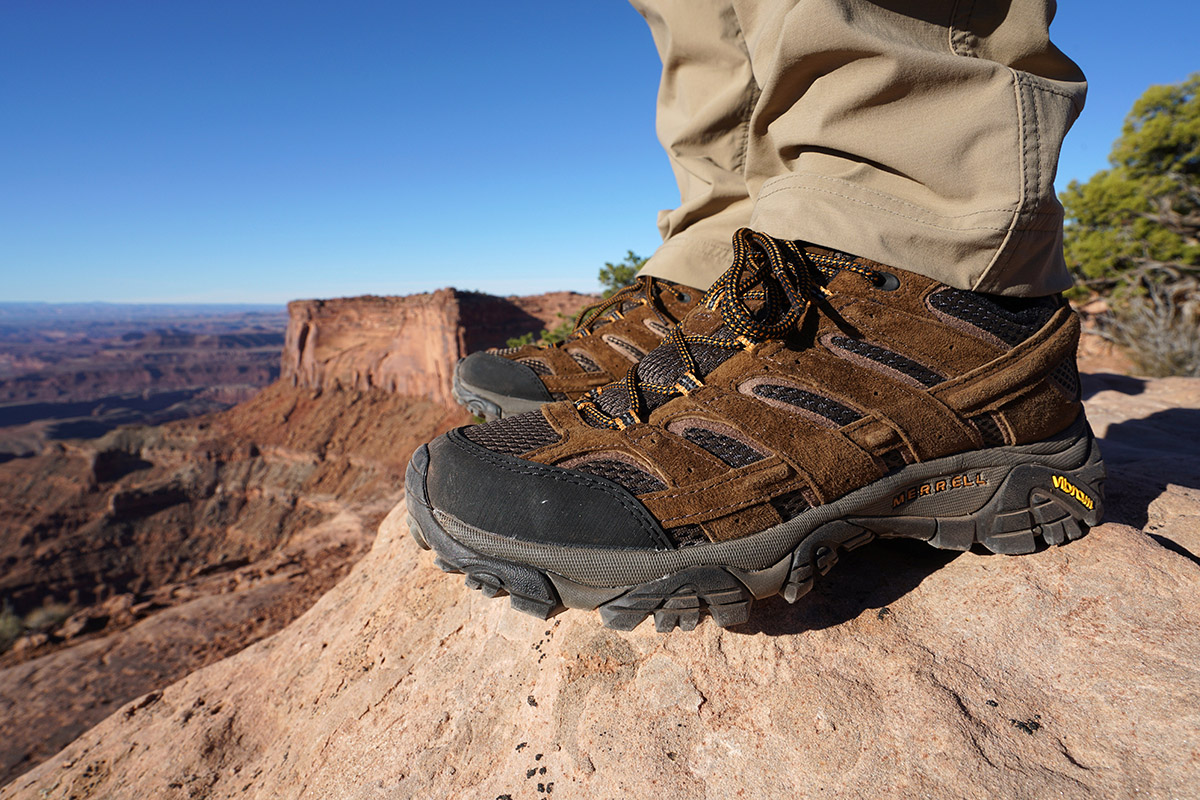
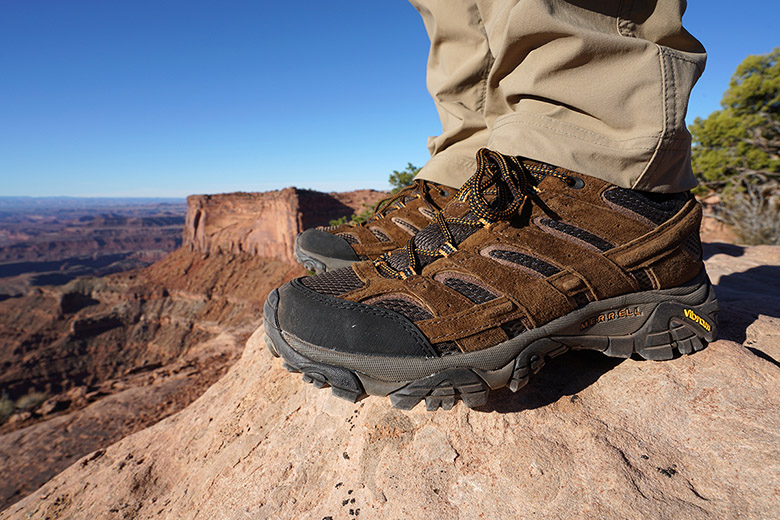
Switchback Travel


Switchback Travel
Price: $110
Weight: 2 lbs. 0 oz. (men’s size 9)
Waterproof: No (available)
What we like: Great on-trail comfort and excellent fit at a reasonable price.
What we don’t: Flexible build isn’t a good match for heavy loads or technical terrain.
See the Men's Merrell Moab 2 See the Women's Merrell Moab 2
Merrell’s original Moab reached legendary status, and the current “2” carries on the tradition. To cut right to the chase, after taking the Moab 2 Ventilator to Utah’s Canyon Country and subsequent testing in Washington’s Cascade Mountains, the shoe impressed almost across the board. It’s not the most athletic design, but the Moab has a nice, wide base, is very comfortable, breathes well, and is one of the better values on the market at $110. Below we break down our experiences with the Moab 2. To see how it stacks up to the competition, see our article on the best hiking shoes.
Sliding your feet into the Merrell Moab 2 is a reminder of what has made these shoes so popular for so long. It’s truly comfortable right out of the box with a cushioned collar and tongue, supportive footbed, and enough flexibility to take straight to the trail. One noticeable area of improvement in the latest Moab shoe is the refined insole. You now get decent arch support, and the molded heel cup holds you nicely in place. Moreover, there is extra padding in the heel that offers a surprising amount of trail isolation and underfoot protection. This additional cushioning felt a little tall and funny at first but gives the shoe a customized feel as the miles add up and likely contributes to the impressive comfort over long trail days..jpg)
Merrell’s Moab shoes always have been considered a moderately lightweight hiker, and the current model carries the torch. On our scale, the non-waterproof Ventilator weighs in at 2 pounds exactly for a pair of men’s size 9 (slightly more than the listed weight of 1 pound 15 ounces). The waterproof low-top model adds 2 ounces for the pair, which is competitive in the traditional hiking shoe market. For comparison, Oboz’s Sawtooth II Low is 1 pounds 15.2 ounces and Keen’s Targhee Vent is even lighter at 1 pound 13.6 oz. (the waterproof Targhee III is 1 lb. 14.8 oz.). You can save even more weight with a trail running-inspired model like Salomon’s X Ultra 3 (1 lb. 9.8 oz.) or X Raise (1 lb. 5.5 oz.), but you do give up a little in cushioning and underfoot protection. For most hikers and backpackers, the Moab 2 provides a great combination of weight and comfort..jpg)
The Moab 2’s core customers are day hikers, and as a result, the shoe offers modest stability and support. Stacked up against a running shoe, the Moab 2 is less prone to ankle rolls on rocky terrain, but in both the mid-height boot and low-top shoe version, there is a fair amount of flex both underfoot and around the collar. This isn’t necessarily a bad thing—a more flexible shoe often is quite a bit more comfortable—but the Moab is not ideal for carrying heavy loads, long and steep climbs, or traversing technical terrain..jpg)
One of the more noticeable changes with the Merrell Moab 2 is the addition of two silicon bands built into the upper material that run lengthwise around the inside and outside of the foot. The intention of these bands is to provide more structure and reduce the risk of rolling an ankle. In use, it’s been difficult to quantify the differences in this design change. The shoe definitely felt planted while scrambling over slick rock in Utah and hiking rocky and muddy trails back home in the Pacific Northwest, but the shoe still has the mild flexibility side to side of the original Moab. Whether or not the band is helping is hard to tell, but the shoe felt secure and stable in a range of conditions.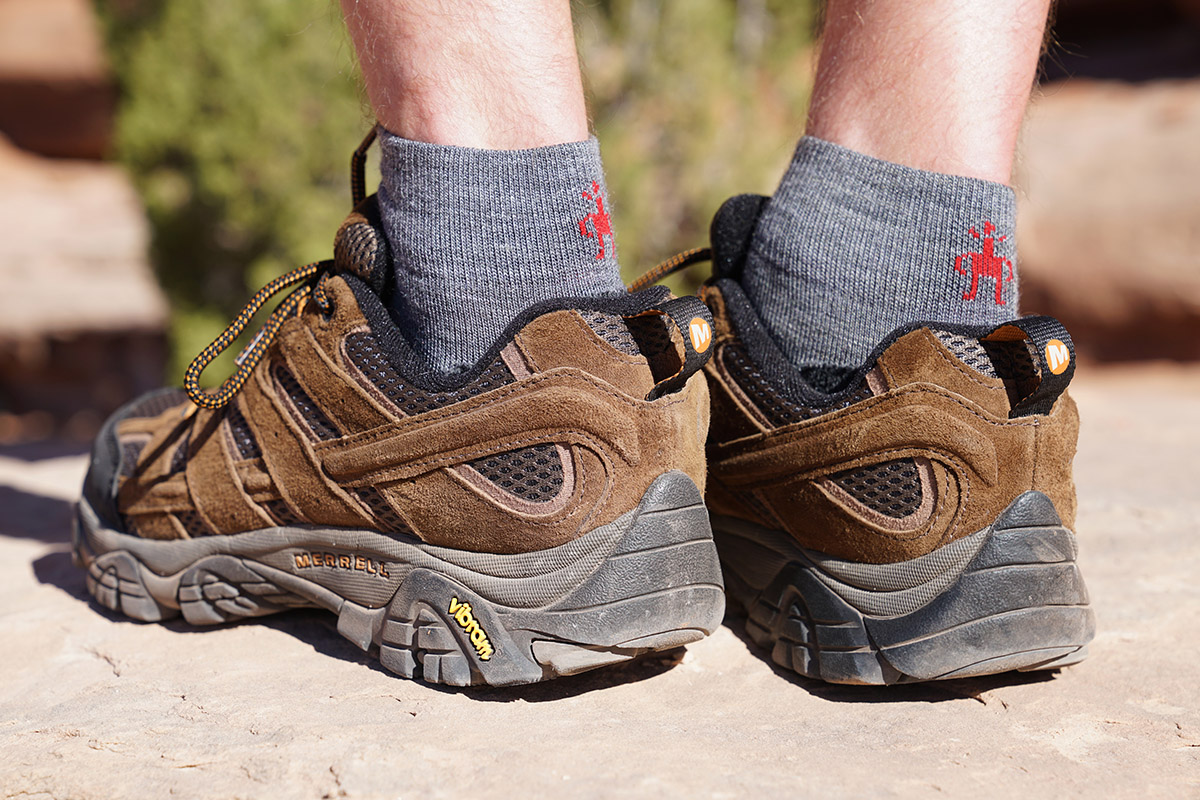
Merrell opted not to mess with the tread pattern or Vibram rubber compound from the original Moab with the “2.” We think this is a fine decision as the trusty outsole has proven to have a long lifespan and offers up decent all-around traction over rock and dirt. The tread design looks pretty busy with a funny mix of circles, open channels, and narrow and thick lugs, but it gets the job done..jpg)
Overall, I give the Moab a passing grade on traction and am confident they'll be a good match for most day hikers and moderate-difficulty peak baggers. We’ve certainly worn grippier shoes on rock—we found the Merrells a little slippery while scrambling around the canyons outside of Moab—but the tread dug in nicely into soft mud and dirt back in the Pacific Northwest. Those tightly spaced lugs did have a tendency to cake up in the early season muck, however. Further, while the shoe does a fair job on descents, it's a step down from a serious hiker like our Salomon X Ultra 3’s angled tread that bites into the ground at the heel.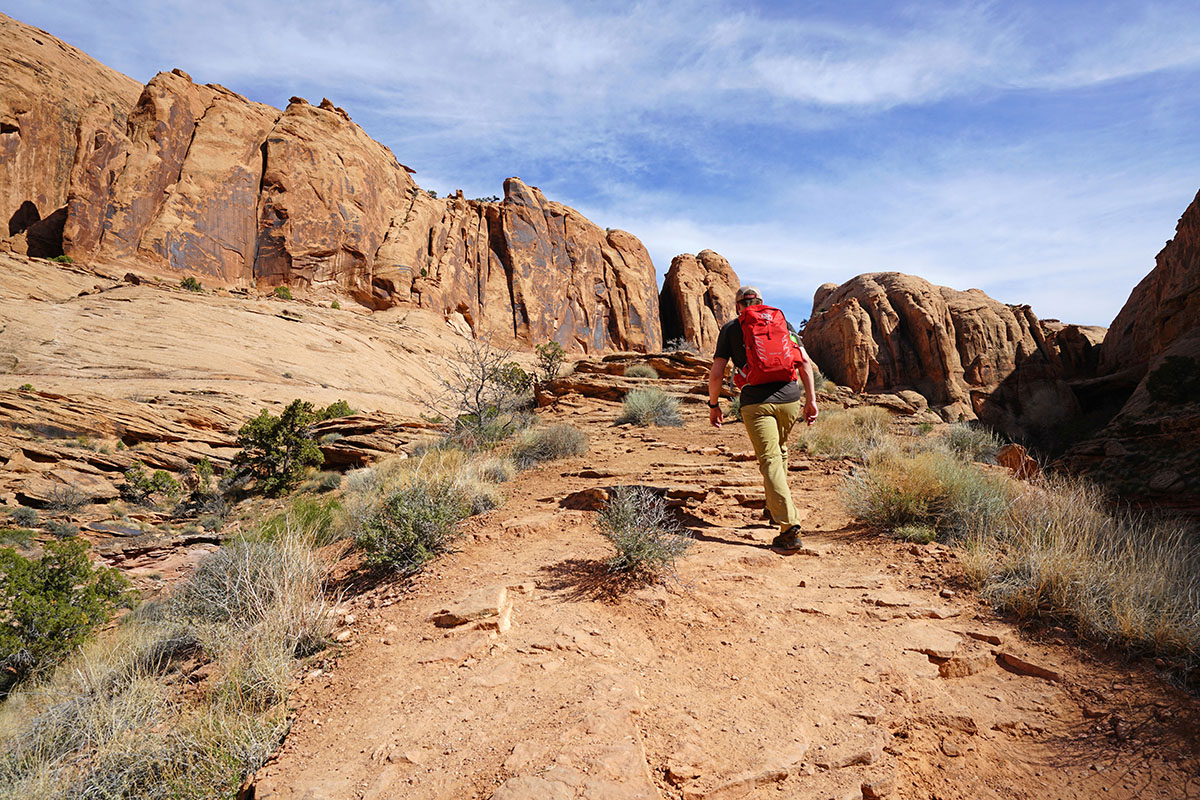
I had the non-waterproof Ventilator model for testing, so it shouldn’t come as a surprise that breathability was very good. The Moab 2s have quite a bit of mesh along the sides and top, which along with lightweight socks kept me comfortable while hiking in the mid 80s in Utah. The available waterproof models will have a pretty significant impact on breathability, so if you’re hiking in warm temperatures or don’t mind getting your feet wet on the occasional stream crossing, the Ventilator model is a great way to stay cool.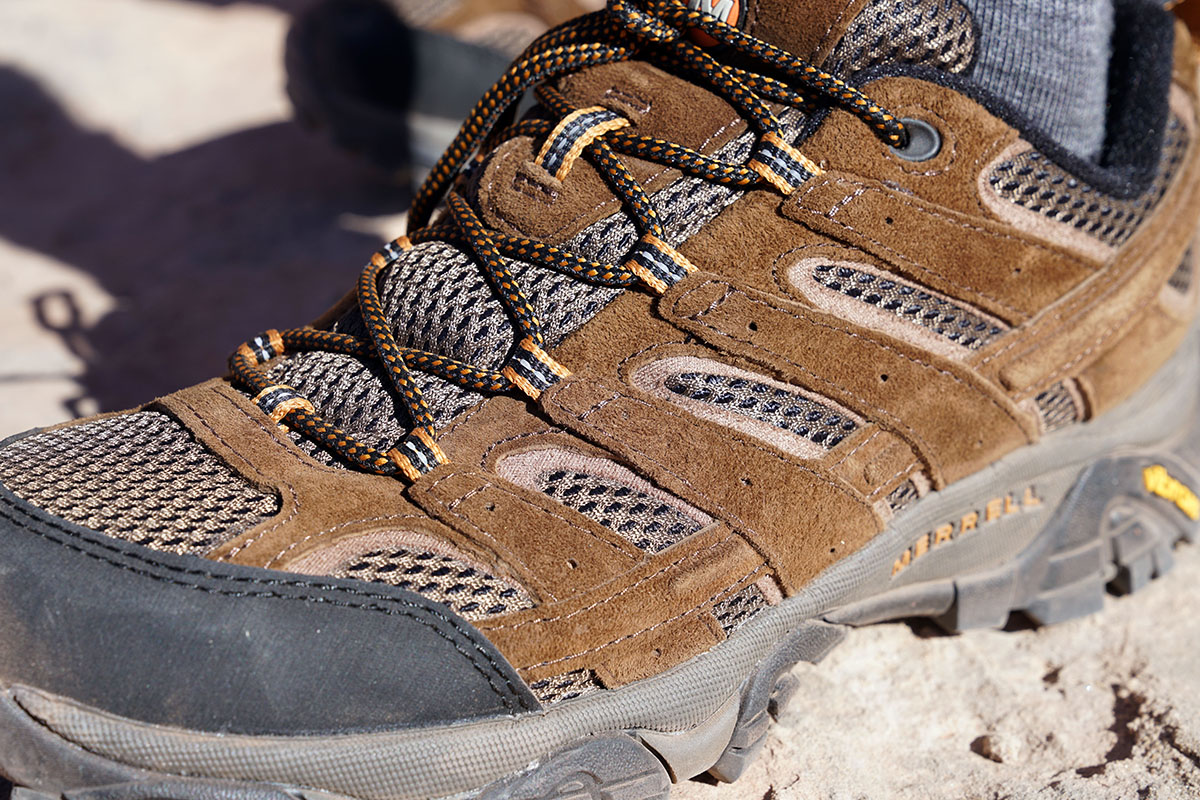
Wearing the non-waterproof shoe turned our typical creek dunking and wet-weather testing into more of a sock-soaking exercise. The liberal use of mesh in the shoe’s upper means moisture that clears the sides of the outsole will start seeping in. The positive is that the mesh dried very quickly and our merino hiking socks did the same in the Utah heat.
As with the prior model, Merrell offers two waterproof options: an in-house M-Select design and Gore-Tex. While we haven’t had a chance to test these variants, prior experience tells us the M-Select (called the Merrell Moab 2 WP) is a fine choice for most day hikers that want a waterproof shoe. The Gore-Tex shoe likely will offer a little better breathability at a slightly lower weight, but both are pretty darn waterproof, and the Gore-Tex version is $20 more expensive ($155 for the shoe and $165 for the mid-height boot)..jpg)
In terms of durability, with a few months of use the Moab is holding up really well. Our trip to Utah left a few permanent scrapes along the toe cap, but otherwise the shoes look as good as new. A potential area of weakness is the mesh along the upper material, but we haven't had any signs of tearing yet. The previous model was a pretty reliable hiking shoe—particularly for a lightweight design—and the build quality appears just as good with the newer Moab 2..jpg)
I went with my typical men’s size 9 and this turned out to be a great match. As with my previous Moabs, the fit was excellent with the Merrell Moab 2: The length is just right and there is plenty of space in the toe box for long days on the trail without feeling sloppy. And the sculpted insole that has more arch support does an even better job holding the foot in place. I particularly like the snug heel cup that was a nice fit for my somewhat narrow foot (I have the occasional issue with heel slippage with some wider-set models, which can lead to blisters). A big part of the Moab’s appeal is its friendly fit, and Merrell stuck with what worked here..jpg)
For this review, we tested the men’s version of the Moab 2 Ventilator Low, but Merrell also makes the shoe in a waterproof model, which adds about 2 ounces per pair and costs $25 more. For hikers who want added support and protection, the line includes a Moab 2 Mid boot in both non-waterproof Ventilator ($120) and waterproof ($145) models (see our in-depth Moab 2 Mid review). As we touched on above, you also can upgrade to a premium Gore-Tex waterproof membrane for $155 (low-top) or $165 (mid). And all of the aforementioned options are made in women’s-specific versions in different colorways. Finally, Merrell offers the Moab 2 Prime with an all-leather upper, as well as work and tactical variations for more specialized activities. What they all share in common, however, is a high level of comfort and good price points for what you get. 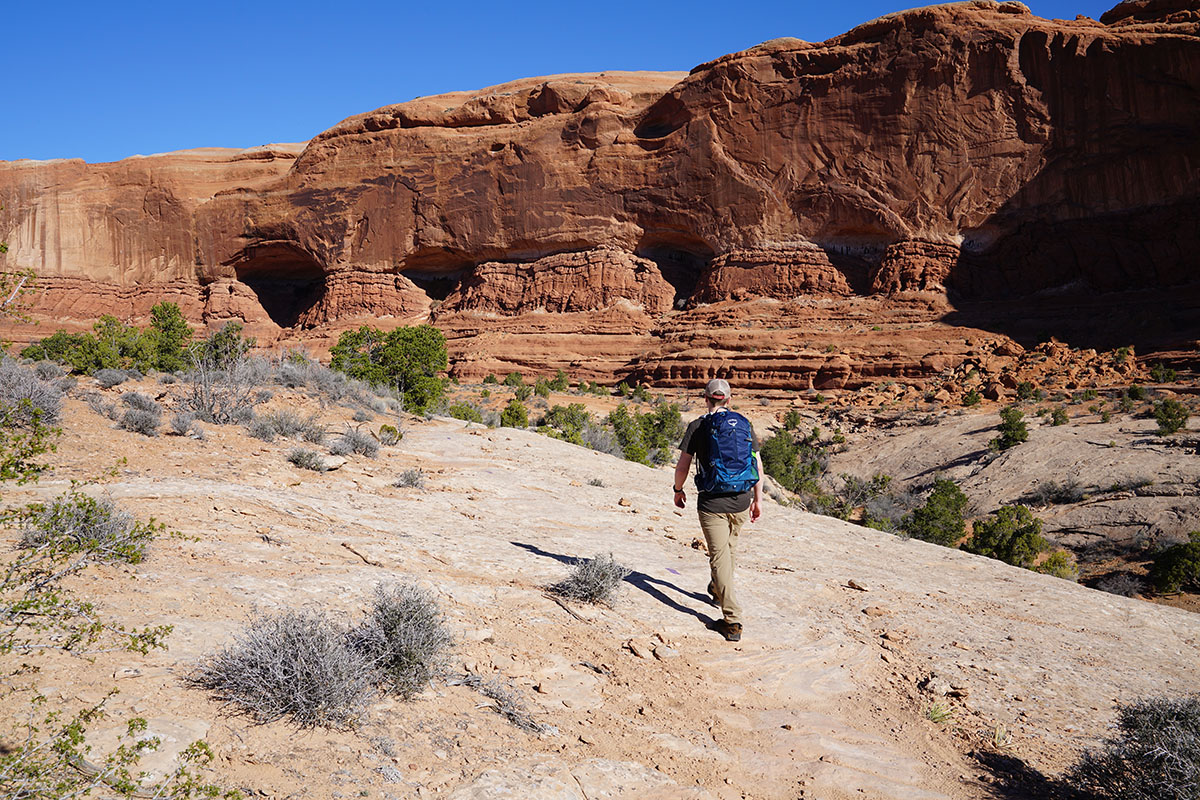
.jpg)
| Shoe | Price | Type | Weight | Waterproof | Upper |
|---|---|---|---|---|---|
| Merrell Moab 2 Ventilator | $110 | Hiking shoe | 1 lb. 15 oz. | No (WP available) | Leather / mesh |
| Keen Targhee Vent | $155 | Hiking shoe | 1 lb. 13.6 oz. | No (WP available) | Leather |
| Oboz Sawtooth II Low | $115 | Hiking shoe | 1 lb. 15.2 oz. | No (WP available) | Leather / mesh |
| Salomon X Ultra 3 | $120 | Hiking shoe | 1 lb. 9.8 oz. | No (WP available) | Synthetic |
| Salomon X Raise Low | $110 | Hiking/trail running | 1 lb. 5.5 oz. | No (WP available) | Synthetic |
| Merrell MQM Flex 2 | $110 | Hiking/trail running | 1 lb. 9 oz. | No (WP available) | Mesh / TPU |
The lightweight and budget-friendly end of the hiking shoe and boot market is teeming with options, but the Merrell Moab 2 retains its place as one of our favorites. The Moab’s long-time competitor is the Keen Targhee, which is one of only a few shoes that can compete in terms of popularity. The Keen Targhee Vent accomplishes a lot of what we love about the Moab 2: a solid feel with a roomy toe box and good all-around trail performance. Both are great options, but the Moab undercuts the Targhee in price by a significant $45 for the non-waterproof version. No shoe is perfect, but the Moab's value is what pushes it ahead in our round-up of hiking shoes..jpg)
A second shoe that goes head-to-head with the Moab 2 is Oboz’s Sawtooth II Low, which is in many ways a beefed-up Moab. Its stiff heel counter and thick outsole provide a surprisingly rigid structure and good trail isolation for a low-top design. Further, its snug fit around the heel and spacious toe box make it a favorite among both day hikers and backpackers. One downside of the substantial build is that the Oboz has a clunkier and heavier feel compared with the Moab despite having a similar all-in weight of 1 pound 15.2 ounces. In the end, we give the edge to the softer and more comfortable Moab for lighter trail uses.
Opting for a performance-oriented lightweight shoe like the Salomon X Ultra 3 gets you a nimbler feel, similar ventilating abilities, and a step up in traction. If we’re moving fast over long distances or tackling technical terrain, we prefer the 6-ounce-lighter Salomon. But if you prefer a more traditional shoe that puts a premium on stability and comfort, the Moabs may be the better option. The Merrell’s solid base and better isolation from the trail are a great combination for day hikes and weekend backpacking trips.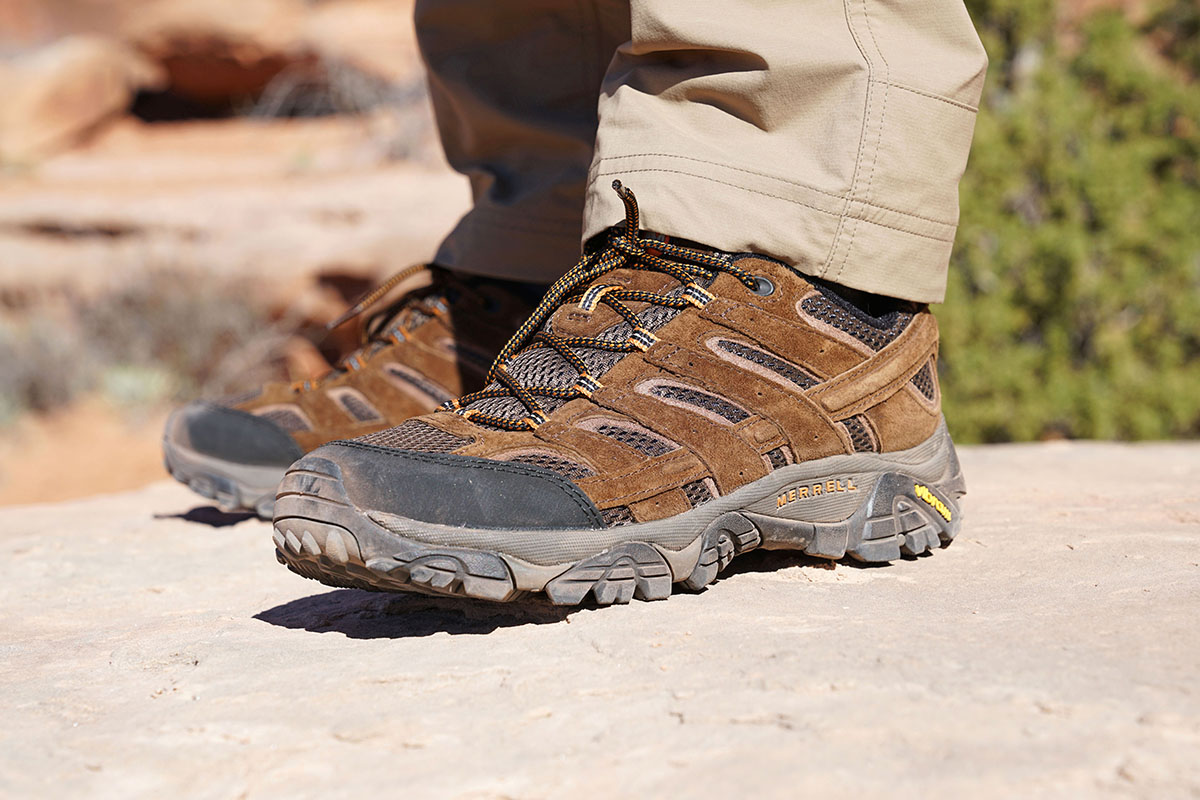
A second Salomon option to consider is their newer X Raise. For the same price as the Moab 2 (for the non-waterproof, low-top version), the X Raise is impressively comfortable with generous cushioning underfoot, nice padding at the collar, and a soft interior. It also has an athletic, trail runner-like feel and light weight (1 b. 5.5 oz.) that are a great match for fast-and-light adventures. Our only notable performance-related complaint is that the shoe felt surprisingly squirrely and hard to trust while hiking over wet rock. Therefore, we still consider the Moab 2 the best budget hiking shoe, but the X Raise isn’t far behind and wins out in a few key areas.
Finally, Merrell’s own MQM Flex 2 is an interesting lightweight alternative. This shoe has a trail runner-like look and build, which trims away a significant 6 ounces per pair compared with the Moab. The MQM is also more flexible, which is a nice match for fast-moving days. But we found it falls short in a couple key areas. First, the thin construction underfoot can lead to foot soreness when carrying a heavy load or when traveling over rocky terrain. And we also have some concerns from a long-term durability standpoint. Specifically, the lugs are notably flexible, and we’ve torn off a couple chunks after only two months of use on fairly moderate terrain. Overall, within Merrell’s lineup, we think the Moab 2 stands apart as their most complete and well-designed product.
If you’re thinking about buying gear that we’ve reviewed on Switchback Travel, you can help support us in the process. Just click on any of the seller links above, and if you make a purchase, we receive a small percentage of the transaction. The cost of the product is the same to you but this helps us continue to test and write about outdoor gear. Thanks and we appreciate your support!
Depending on the seller, most products ship free in the United States on orders of $50 or more. International shipping availability and rates vary by seller. The pricing information on this page is updated hourly but we are not responsible for inaccuracies.